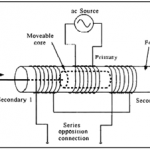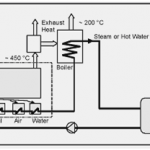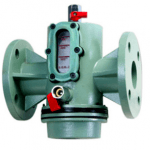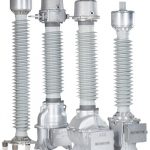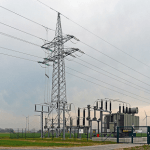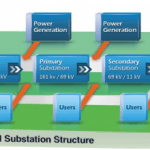First of all, knowing what is LVDT, its definition must be elaborated. LVDT is defined as a sensor which converts a nonlinear motion to an electrical signal. There are different LVDT types such as displacement etc. The linear variable differential transformers have no requirements of electrical contact amid its moving parts either core rod assembly or probe etc. and transformer itself, however, it has reliance over electromagnetic coupling. This is the … [Read more...]
Cogeneration (CHP) Definition – Types of Cogeneration Power Plants
There are numerous ways through which electricity can be produced but the major supply of electricity throughout the world is through thermal power plants. However, some chunk of electricity is wasted while transmission in power transmission lines etc. In traditional power plants, the efficacy is only 35 percent, however, remaining 65 percent of energy is lost on the way of transmission. Heat which is rejected to the surrounding environment is one of the … [Read more...]
What is Buchholz Relay? Working Principle, Construction & Applications
Max Buchholz first introduced Buchholz relay in the year 1921 and was named after him. A relay is basically an appliance of security utilized in electrical transmission systems such as distribution and transmission. Buchholz relay is efficient in protection again arching, fractional discharge, hot spots, and current leakage in electrical systems. The device has an important impact when it comes to economic prospects and is also enhancing the life of … [Read more...]
Electrical Substation Components & their Workings
The electricity substation is a network of electrical equipment which is connected in a structured way in order to supply electricity to end consumers. There is numerous electrical substation components like outgoing and incoming circuitry each of which having its circuit breakers, isolators, transformers, and busbar system etc for the smooth functioning of the system. The power system is having numerous ingredients such as distribution, transmission, and … [Read more...]
Types of Electrical Substations and Functions
An Electrical Substation plays an important part of the electrical system as it acts a bridge in transferring the electricity from the power generation source unit to the end consumers by working to speed up or slow down the current when required. Substations include transformers, insulators and circuit breakers to help regulate power issues, changing the frequency, voltage, AC to DC, P.F and other characteristics. Substations play a key role in helping … [Read more...]
What is a Electrical Substation – Layouts & Uses
In the modern era, the need for electrical power has increased at an enormous pace. To fulfill the required demand, huge power is needed to be delivered; hence bigger generating stations are to be designed. The electrical power generating stations may be generating electrical energy from water, atomic, thermal, or renewable sources solely contingent on the accessibility of resources and areas where these power stations are built. The areas where power … [Read more...]
